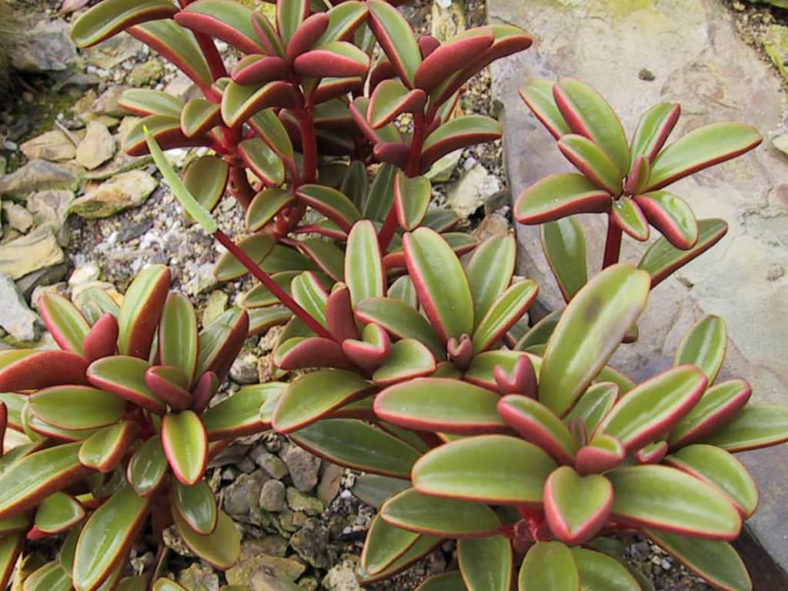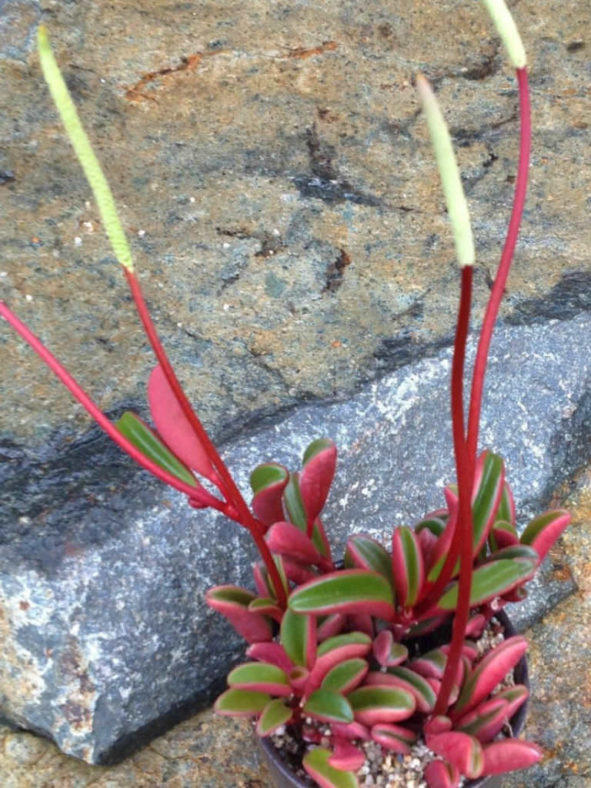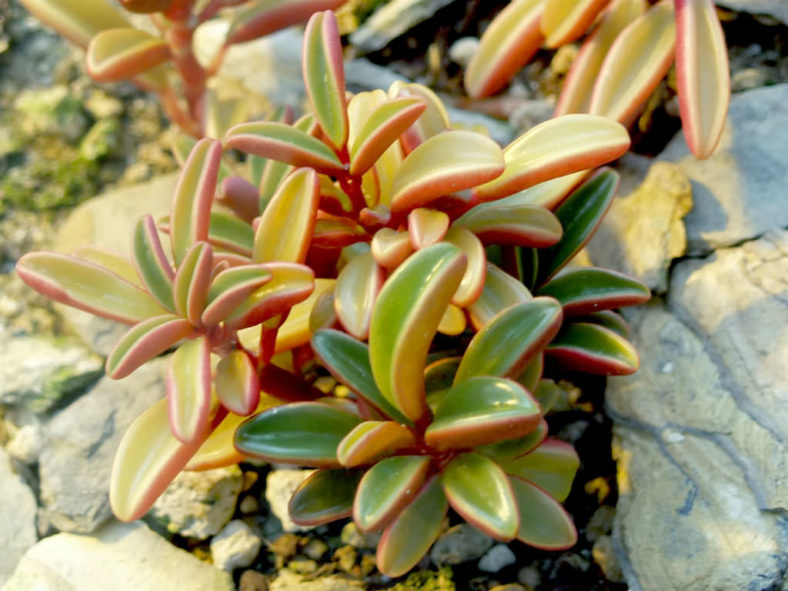Scientific Name
Peperomia graveolens Rauh & Barthlott
Common Name(s)
Ruby Glow, Ruby Glow Peperomia, Ruby Peperomia
Scientific Classification
Family: Piperaceae
Genus: Peperomia
Etymology
The specific epithet "graveolens" (pronounced "grav-ee-OH-lens") means "strong-smelling, foul-smelling" and refers to the flowers of this species, which emit an intense, unpleasant odor similar to that of mouse urine.
Origin
Peperomia graveolens is endemic to southern Ecuador. It occurs in forest understories of the Andes at elevations from 6,560 to 8,200 feet (2,000 to 2,500 m).
Description
Peperomia graveolens is a small succulent that forms a cluster of short, branched, reddish stems bearing unique leaves with wine-burgundy-red undersides and a transparent green "window" on the upper surface. It can grow up to 8 inches (20 cm) tall. The leaves are thick, fleshy, V-shaped in cross-section, and can measure up to 1.2 inches (3 cm) in length.
The tiny, yellowish-white flowers have an unpleasant scent and appear densely arranged in simple racemes on a burgundy-red stem that can grow up to 10 inches (25 cm) long. The racemes resemble a rat's tail and can reach a length of 3 inches (7.5 cm).

How to Grow and Care for Peperomia graveolens
Hardiness: USDA hardiness zones 10a to 11b: from 30°F (-1.1°C) to 50°F (10°C).
Peperomias are not particularly hard plants to grow, and their small size and delicate leaves make them perfect for desktops and dish gardens. They will rarely overtake their neighbors or shade them out. In short, they are perfectly mannered and attractive small plants. The biggest problems are usually related to watering. They like steadily moist soil but can be very sensitive to overwatering. Overwatered Peperomias tend to wilt or have raised, scab-like protrusions on their leaves. Don't be alarmed if your plant loses a few bottom leaves; however, a massive leaf drop is usually due to a temperature change or a fertilizer problem. Lastly, Peperomias are susceptible to mealybugs, so watch for cottony white masses on the stems or undersides of leaves. These plants thrive when slightly pot-bound, so don't over-pot them.
Repot plants in spring, especially to refresh the existing soil, but place them either back into the same-size container after root pruning or in a container one size smaller. The largest Peperomias remain relatively small and will never grow into large specimen plants. Most species can be relatively easily propagated from leaf cuttings.
Learn more at How to Grow and Care for Peperomia.
Links
- Back to genus Peperomia
- Succupedia: Browse succulents by Scientific Name, Common Name, Genus, Family, USDA Hardiness Zone, Origin, or cacti by Genus
Photo Gallery
Click on a photo to see a larger version.


